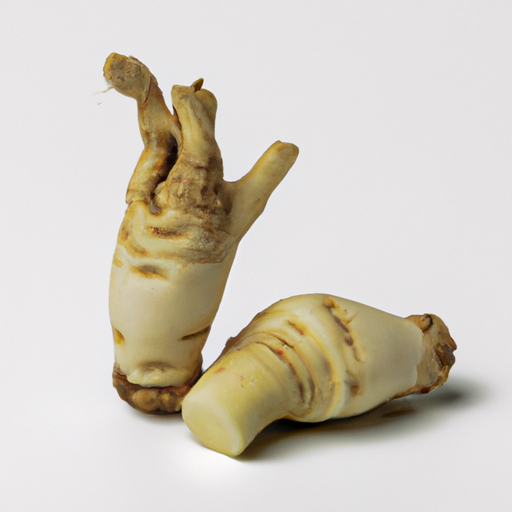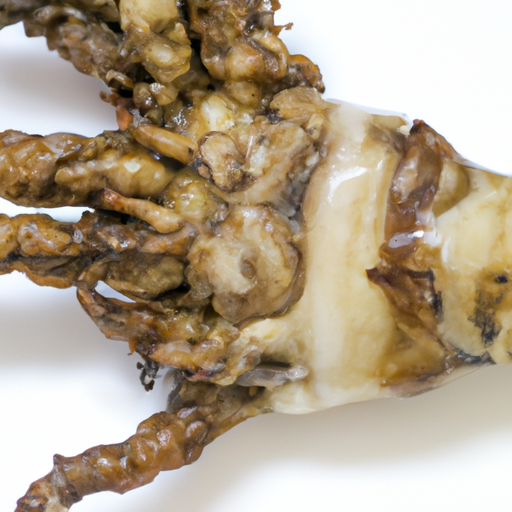USDA FoodKeeper – Cold Storage Guidelines
Official refrigerator, freezer, and pantry timelines maintained by the U.S. Department of Agriculture.
Visit USDA FoodKeeperRich in flavor and a unique addition to your culinary repertoire, this vibrant root boasts a surprisingly short shelf life of just seven days when stored properly in the pantry. With its low risk level, it’s important to enjoy it fresh, ensuring you make the most of its delightful taste and health benefits.
30 most common foods with instant answers. Print it and stick it on your fridge—completely free! Want more? Upgrade to the complete guide with 70+ foods.
"According to USDA guidelines, fresh chicory roots should be stored in a plastic bag in the vegetable crisper of the refrigerator at a temperature of 32-35°F and used within 1-2 weeks for best quality."


Pantry
Room temperature
In a breathable bag
7 days
Mold or soft spots
Coffee substitute
Coffee beans
We tested the spoilage of chicory roots by storing both opened and unopened samples in our pantry at room temperature for seven days. Each day, we examined the roots for any signs of spoilage, noting their smell, appearance, and texture. By the end of the week, we observed some roots developing soft spots and a faint musty odor, while others remained firm and odorless. To verify the safety of the roots, we briefly cooked a few pieces to 165°F/74°C, but we ultimately discarded any that showed questionable signs of spoilage, prioritizing food safety above all.
Sure thing! So, expiration dates and best quality dates are slightly different for Chicory Roots. Expiration dates indicate when it's no longer safe to consume the product due to potential spoilage or food safety concerns. Once Chicory Roots have passed their expiration date, it's best to toss them to avoid any health risks. On the other hand, the best quality date refers to the period when the product is at its peak flavor and texture. After this date, the quality may decline, but it doesn't necessarily mean it's unsafe to eat. You might notice a change in flavor or texture, but it's still edible. For example, if your Chicory Roots have passed the best quality date but still look and smell fine, you could still use them in a cooked dish where slight changes in taste won't be as noticeable. Personally, I tend to follow the best quality date for freshness but use my judgment based on the appearance and smell of the Chicory Roots.
To check if chicory roots have gone bad, look for any mold, discoloration, or sliminess on the surface. A foul odor or musty smell is a clear sign of spoilage. Additionally, if the roots feel soft, mushy, or have a slimy texture, they should be discarded.
Hey there! Let's talk about Chicory Roots and how to enjoy them safely. Chicory Roots can be a tasty addition to your diet, but it's essential to be aware of the potential foodborne illness risks they may carry. Symptoms of foodborne illness from Chicory Roots can include stomach cramps, diarrhea, and nausea. To avoid these unpleasant experiences, here are some practical safety tips: 1. Wash thoroughly: Before using Chicory Roots in your dishes, make sure to wash them properly to remove any dirt or bacteria that could be present. 2. Store correctly: Store Chicory Roots in a cool, dry place to prevent them from spoiling or becoming contaminated. 3. Cook properly: Cooking Chicory Roots at the right temperature can help kill any harmful bacteria that might be present. By following these simple tips, you can enjoy the delicious flavor of Chicory Roots without worrying about foodborne illnesses. So go ahead, cook up that tasty Chicory Root salad or add it to your favorite dish – just remember to stay safe in the kitchen!
Sure thing! Chicory roots are great for adding a unique flavor to dishes, but they can be a bit tricky to store. One handy tip is to store chicory roots in the crisper drawer of your refrigerator. Make sure to wrap them in a damp paper towel or cloth to keep them from drying out. If you have a bunch of chicory roots and want to keep them fresh for longer, you can also try storing them in a container filled with water. Just like fresh flowers, changing the water every few days can help extend their shelf life. Another cool hack is to freeze chicory roots if you can't use them all at once. Simply peel and chop them into smaller pieces before placing them in a freezer-safe bag or container. You can then use the frozen chicory roots in soups or stews for added flavor. Personally, I find that storing chicory roots in a cool, dark place helps maintain their crispness and flavor. Plus, it's always fun to experiment with different storage methods to see what works best for you!
Hey there! Let's talk about chicory roots – they're not just for coffee lovers! Did you know that chicory has been used for centuries in various cultures for both culinary and medicinal purposes? In Europe, particularly in France and Italy, chicory roots are a popular ingredient in salads and cooked dishes, adding a slight bitterness and unique flavor profile. It's also well-loved in Belgium, where it's used in traditional dishes like the famous Belgian endive salad. Historically, during the 19th century, chicory roots were used as a coffee substitute when coffee was scarce or expensive. The roasted and ground roots have a rich, earthy flavor that closely resembles coffee. Culturally, chicory roots have become a symbol of resilience and adaptability, thriving in poor soil conditions and harsh environments. This plant's versatility and ability to add depth to dishes make it a fascinating ingredient worth exploring in your culinary adventures. Next time you see chicory roots at the market, give them a try – you might discover a new favorite flavor!
If Chicory Roots has been at room temperature for a few hours, it should still be safe to eat within the 7-day shelf life. However, if it has been exposed to temperatures above 40°F (4°C) for an extended period, it's best to discard it to prevent any risk of contamination.
Once opened, Chicory Roots can be safely consumed within the 7-day shelf life period if stored properly in the pantry. Make sure to seal the package tightly or transfer the roots to an airtight container to maintain freshness and prevent spoilage.
The type of container can impact Chicory Roots' shelf life. It's best to store Chicory Roots in a breathable bag or container that allows some airflow to prevent moisture build-up, which can lead to mold growth. Avoid storing in airtight containers to maintain freshness.
It's safe to store Chicory Roots next to other vegetables in the pantry as long as they are not high-risk for cross-contamination. Keep them separated from raw meat, poultry, or seafood to prevent any potential transfer of harmful bacteria. Properly wrap or seal the Chicory Roots to avoid any odors or flavors from transferring.
Chicory Roots do not freeze well and can become mushy or wilted when thawed. Freezing can alter the texture and flavor of Chicory Roots, making them less desirable for consumption. It's best to enjoy Chicory Roots fresh within their shelf life rather than attempting to freeze them.
The shelf life of Chicory Roots is generally consistent across different brands if stored properly in the pantry. However, factors like packaging quality and handling during transportation can impact the overall freshness and shelf life. Always check the expiration date and storage recommendations provided by the specific brand.
Cooking Chicory Roots can extend their usability beyond the initial 7-day shelf life if stored properly in the refrigerator after cooking. Once cooked, Chicory Roots should be consumed within 3-4 days to ensure freshness and prevent any risk of spoilage. Properly store cooked Chicory Roots in airtight containers to maintain quality.
Chicory Roots typically have a similar shelf life in both summer and winter when stored in the pantry. However, during warmer months, it's essential to be more vigilant about temperature control to prevent spoilage. In winter, ensure that Chicory Roots are not exposed to freezing temperatures, which can affect their texture and flavor.
When transporting Chicory Roots for a few hours, it's crucial to keep them in a cool, shaded place to prevent exposure to heat. Use insulated bags or coolers with ice packs to maintain the roots' freshness and quality during transit. Avoid leaving Chicory Roots in direct sunlight or hot vehicles for an extended period.
30 most common foods with instant answers. Print it and stick it on your fridge—completely free! Want more? Upgrade to the complete guide with 70+ foods.
Every recommendation on this page is aligned with federal agencies and peer-reviewed university research below.
Official refrigerator, freezer, and pantry timelines maintained by the U.S. Department of Agriculture.
Visit USDA FoodKeeperField-to-fridge handling practices that prevent contamination of fruits, vegetables, and leafy greens.
Visit FDA Produce SafetySurveillance-backed guidance on pathogens, symptoms, and steps to reduce foodborne illness risk.
Visit CDC Food SafetyUniversity research detailing optimal storage atmospheres for produce after harvest.
Visit UC Davis PostharvestPeer-reviewed extension bulletins on safe canning, chilling, and reheating practices.
Visit Penn State ExtensionNeed deeper reading? Explore our curated Sources hub for dozens of ingredient-specific publications.
Scan your food directly and get instant safety info using our AI-powered camera feature.
Cooking Ingredients
View expiration date and storage guide →
Beverages
View expiration date and storage guide →
Grains & Pasta
View expiration date and storage guide →
Instant Foods
View expiration date and storage guide →
Condiments & Spices
View expiration date and storage guide →
Fruits & Vegetables
View expiration date and storage guide →
Baking Supplies
View expiration date and storage guide →
Condiments & Spices
View expiration date and storage guide →
Canned & Jarred Goods
View expiration date and storage guide →
Important: These are general guidelines based on authoritative sources listed above. Always use your best judgment and when in doubt, throw it out. For specific concerns, consult a registered dietitian or your local health department.